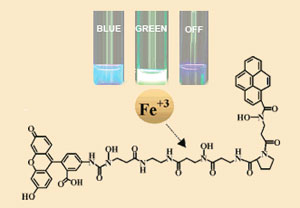Allright people.. lots of ya all seem to be interested in this.
it is quite simple. Since things have gone multi-giga-byte now a days, handeling one DVD is way easier then poppin n jiggling six CDs one after the other.
Ok here are the steps.
What u need:1. The CD isos of Fedora core ofcourse(the 1st five only, as sixth is rescue)
2. Magic ISO to edit images. or any other free alternative
3. An editor.
4. A Dvd Burner.
5. Daemon tools(makes life easier and lessens the free space req.)
6. 4 Gb free HDD space(+ the space the CD isos are taking up)
HowTo:1. Copy the CD1 to a temp folder.(there should be 4 GB space on this drive)
2. Open Magic ISO and browse for the file.
3. From the root of the image see for a file named ".diskinfo"
4. Right click and extract on desktop.
5. Open a command promp and type "edit"(notepad doest work with this nicely, u can use textpad too)
6. Browse to the ".diskinfo" file. it will look like this:
1142397842.393345
Fedora Core
x86_64
1
Fedora/base
Fedora/RPMS
Fedora/pixmaps7. Edit the file to look like this, basically append ",2,3,4,5" after "1" in line 4.
1142397842.393345
Fedora Core
x86_64
1,2,3,4,5
Fedora/base
Fedora/RPMS
Fedora/pixmaps8. Save the file.
9. Drag and drop it to the open iso in Magiciso.
10. Right click on daemon tools in the taskbar and goto virtual CD/DVD-ROM>set no of deviced>4 Drives.
11. After the drives have been created left click on daemon tools again and select "Device 0" and Browse to the 2nd CD image to mount it.
12. Repeat the above step for Cds 3 thru 5. (and select device 1 thru 3 respectively). You should have cds 2 thru 5 loaded in virtual drives. check thru My computer.
13. Next, for each drive(mounted image) go to Drive:\Fedora\RPMS and select and drag and drop all files onto the magic iso window under the folder Fedora\RPMS.(alternatively add then thru magic iso, whatever, just add all). You will be asked to over write a file "TRANS.TBL" each time u drag and drop. just select yes(for explanation see page 3 of this thread).
14. After you have added all rpm files. select File>save under magiciso. rename the file to DVD from CD.
15. You are all done. Now Burn and enjoy!!!
Clean UP:
1. Left click on deamon tools and select unmount all.
2. Right click deamon tools and goto virtual CD/DVD-ROM>set no of deviced>1 Drives
3. Delete the CD isos if u want to free up space(1st check the DVD Image to be sure)
4. Delete ".diskinfo" from desktop
SHORTCOMING: This media will NOT pass the media check. so do no test it. If u are paranoid'nf then load a virtual machine and emulate the linux setup and "media-check" the individual cd isos there. To make it pass the media check u need to regenerate the checksums. which is beyond the scope here and worthless for home users. others google.
---------------------------------------------------------------------------------------------
EDIT: src2206 and aditya.shevade were interested in the reverse i.e. DVD to CD iso...
(this is a painfull method)1. Go to the fedora website hosting the CD isos.
2. Directly mount the CD isos one by one in deamon tools via the webaddress(suppose drive x)
3. Run "CMD" and execute the following commands:
4. Change directory to drive x by typeing "x:"
5. type "copy .diskinfo c:\cd1.diskinfo"
6. Type "tree > c:\cd1.txt"
7. Load the next iso in deamon tools and repeat the two commands above but keep changing the 'cd1' to cd2 and so on(in both commands).
8. Now after u have all the directory structure u gotta get working. load the DVD iso in deamon tools
9. Now using explorer create five folders named CD1 ... CD5
10. See the directory structure but running CMD and using the edit utility.
11. Now for each folder duplicate the contents by copying the files from DVD according to the CD structure.
12. Rename each "cdx.diskinfo" file to ".diskinfo" and place in respectibe CD folder
13. Make iso using magiciso or nero.
14. Varify the file size.
15. Any files u dont find in the DVD, copy them off by loading the CD iso
again in Deamon tools directly from the web.
I sincerely dont think u will go thru the above painfull process.
I am not aware of any simpler processes except downloading the ISO images.
Just think of my effort to write this procedure and try it. give feedback.
I havent tried the above so no promices but logically it should work.
 This is a website that is my homepage now and that alone aught to speak a ton about it. You know all that time you spend in searching for a good torrent for a new releases in the scene, now you don't have to wait for the seed to catch up so that you be sure that you have found an authentic torrent.
This is a website that is my homepage now and that alone aught to speak a ton about it. You know all that time you spend in searching for a good torrent for a new releases in the scene, now you don't have to wait for the seed to catch up so that you be sure that you have found an authentic torrent.
















